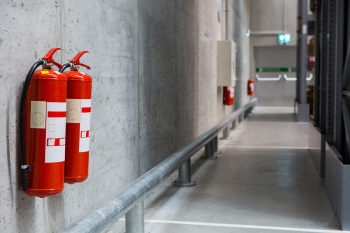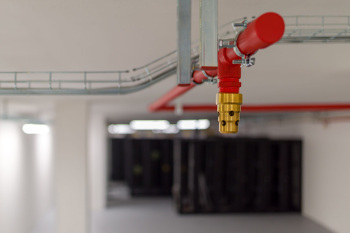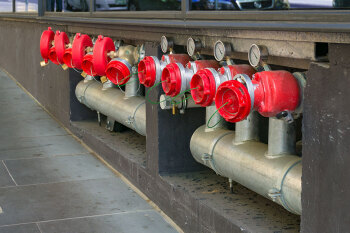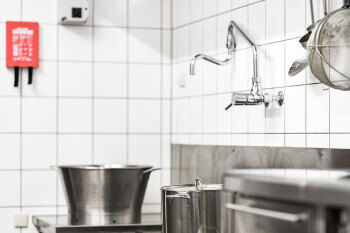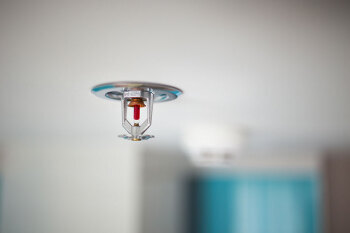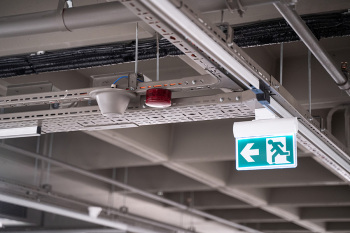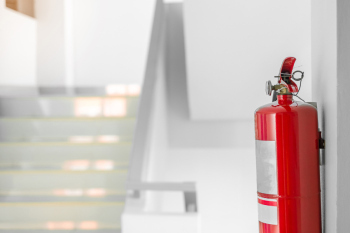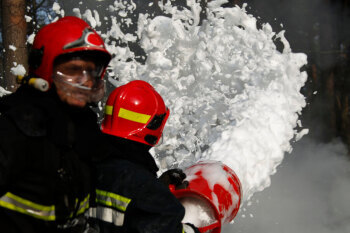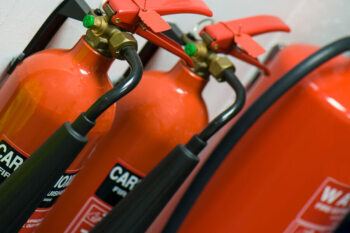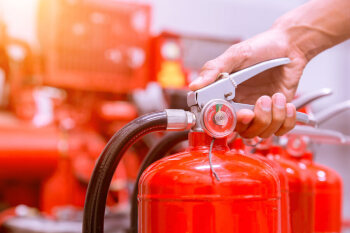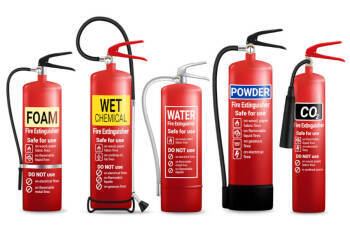Blog
Active & Passive Fire Protection
Fire protection measures are systematically designed to stop the spread of fire and reduce its impact. These measures fall into two broad categories: active fire control measures and passive fire protection. Keep reading to learn more about the difference between active and passive fire protection systems, their types, and functions.
... read moreWhat is a Fire Suppression System?
Fire suppression systems, also known as special hazard systems, stand out due to their efficiency and comprehensive approach to special hazards. Special hazards refer to areas or items in a building or facility that are especially vulnerable or can cause a rapid spread of fire.
Keep reading to gain insight on how fire suppression systems work, the various types available, fire suppression systems maintenance and their significance in ensuring optimal fire safety.
... read moreWhat is a Fire Door?
Also known as fire-resistant doorsets, Fire Doors are part of passive fire protection systems that prevent the spread of fire throughout different building segments.
Keep reading to learn more about fire door types, how they work and what Australian standards apply for fire door testing and maintenance. By complying with Australian standards, building owners and managers can ensure their premises are equipped for safety, drastically reducing the risk of fire-related disasters.
... read moreWhat is a Fire Hydrant and How Does it Work?
Fire hydrants, amongst many other fire fighting equipment, play a vital role in the fire protection of buildings and premises. They serve as a primary water source for fire brigades and other firefighting services in combating fire emergencies.
Keep reading to learn more about fire hydrants and their types, how they work, their regulations, and fire hydrant testing and maintenance.
... read moreWhat are Fire Blankets and How Do They Work?
Fire blankets are pieces of fire resistant cloth or fabric that work on certain types of fires by smothering them at close range without causing harm to users or spreading the flames further.
For residents and staff of residential and office buildings, fire safety knowledge is crucial, as is the regular maintenance and inspection of fire safety equipment. Consider this guide to learn the basics of fire blankets, their sizes, applications, and relevant Australian standards regarding fire blanket testing, installation & maintenance.
... read moreUnderstanding the Use of Fire Hose Reels
Fire hose reels, among various fire fighting equipment, can extinguish fires in their early stages and protect buildings and occupants from destruction.
If you are unsure how fire hose reels contribute as fire suppression measures, keep reading to learn more about fire hose reel use, types, operation, and maintenance in accordance with Australian Standards of fire safety.
... read moreWhat are Automatic Fire Sprinkler Systems?
Fire sprinklers combat and contain the spread of fires with water. Automatic fire sprinkler systems can detect and suppress fires at any time. They’ve become some of the most reliable fire control methods in Australia, stopping slight accidents from escalating.
In this post, we cover automatic sprinkler systems, their types, inner workings, and regulations. As a building owner or manager charged with building and occupant safety, you must check and ensure that your premise complies with Australian fire safety regulations.
... read moreWhat is Emergency & Exit Lighting?
In situations of emergency and power failure, obscured visibility could prevent occupants from locating the exit in time, putting lives at risk. To combat this problem, emergency and exit lighting systems are required by Australian law in any building. In this post, you'll learn more about the types of emergency and exit lighting systems, their respective features, and how to choose the right one for a particular building to ensure that you comply with Australian safety standards.
... read moreUsing a Wet Chemical Fire Extinguisher
Even though wet chemical fire extinguishers are relatively niche in Australia due to their limited uses, they serve a vital purpose in certain situations i.e. kitchen fires. This guide will review the functions of a wet chemical fire extinguisher, what to do in the event of a fire, and how to use them appropriately in fire emergencies.
... read moreUsing a Dry Chemical Fire Extinguisher
A dry chemical fire extinguisher is one of the many types of fire extinguishers used in various fire emergencies.
To deal with unexpected fire situations, it is important to know how a dry fire extinguisher functions, how to identify it, what are its different types, how to clean up after use, and how to maintain it.
Having a portable dry chemical powder fire extinguisher nearby in case of emergencies is crucial.
... read moreUsing a Foam Fire Extinguisher
There are six unique classes of fire extinguishers to suit various fire incidents. Each class and fire extinguisher adheres to Australian standards and are covered in detail in a previous post. However, this guide touches on the workings of a foam fire extinguisher.
Read on to learn more about a foam-type fire extinguisher, when to use it specifically, and how to manage a fire emergency with it effectively.
... read moreUsing a Carbon Dioxide (CO2) Fire Extinguisher
Fire outbreaks in premises can pose significant risks to human lives and properties. Thankfully, you can protect people and buildings from certain fire emergencies using a carbon dioxide (CO2) fire extinguisher.
In this guide, you’ll learn how carbon dioxide fire extinguishers work, how to use them in case of emergencies, and more.
... read moreUsing A Water Fire Extinguisher
There are five main types of fire extinguishers as per Australian standards [water, foam, dry powder (ABE or BE), carbon dioxide, and wet chemicals] and this guide will specifically talk about the workings of a water fire extinguisher, their use case scenarios and how to effectively use them.
... read moreUnderstanding Fire Extinguisher Types in Australia
In this guide, you will learn the importance of having fire extinguishers accessible in your home or business and the different fire extinguisher types and uses. Whether you are looking to protect a residential area, your office building, or even an industrial setting, the items laid out in this article could better prepare you in case of a fire emergency.
... read more
